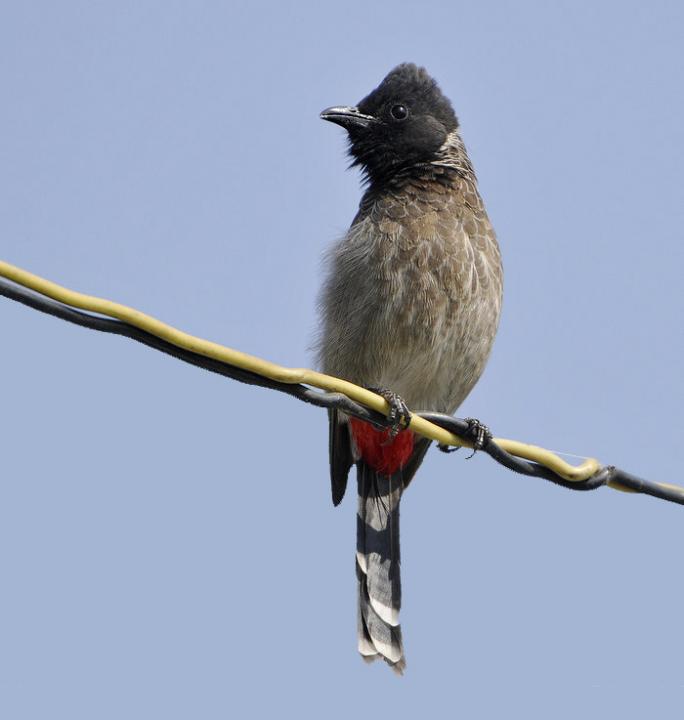Red-vented Bulbul
The Red-vented Bulbul (Pycnonotus cafer) is a member of the bulbul family of passerines. It is resident breeder across the Indian Subcontinent, including Sri Lanka extending east to Burma and parts of Tibet. It has been introduced in many other parts of the world and has established itself in the wild on several Pacific islands including Fiji, Samoa, Tonga, and Hawaii. It has also established itself in parts of Dubai, the United Arab Emirates and New Zealand. It is included in the list of the world's 100 worst invasive alien species.
The Red-vented Bulbul is easily identified by its short crest giving the head a squarish appearance. The body is dark brown with a scaly pattern while the head is darker or black. The rump is white while the vent is red. The black tail is tipped in white. The Himalayan races have a more prominent crest and are more streaked on the underside. The race intermedius of the Western Himalayas has a black hood extending to the mid-breast. Population bengalensis of Central and Eastern Himalayas and the Gangetic plain has a dark hood, lacks the scale like pattern on the underside and instead has dark streaks on the paler lower belly. Race stanfordi of the South Assam hills is similar to intermedius. The desert race humayuni has a paler brown mantle. The nominate race cafer is found in Peninsular India. Northeast Indian race wetmorei is between cafer, humayuni and bengalensis. about 20 cm in length, with a long tail. Sri Lankan race haemorrhous has a dark mantle with narrow pale edges. Race humayuni is known to hybridize with Pycnonotus leucogenys and these hybrids were once described as a subspecies magrathi marked by their pale rumps and yellow-orange or pink vents. In eastern Myanmar there is some natural hybridization with Pycnonotus aurigaster.
Sexes are similar in plumage, but young birds are duller than adults. The typical call has been transcribed as ginger beer but a number of sharp single note calls likened as pick are also produced. Their alarm calls are usually responded to and heeded by many other species of bird.


